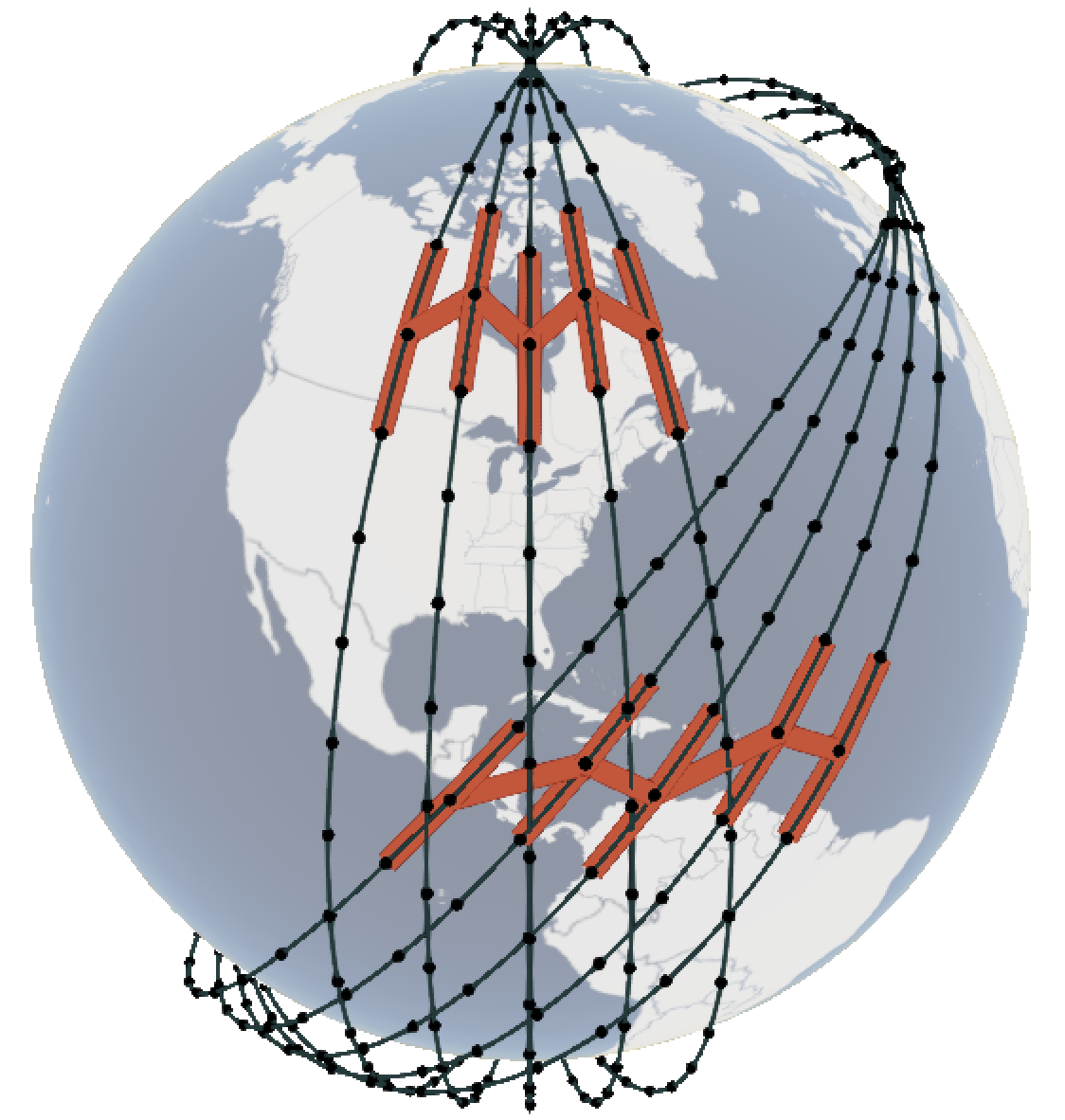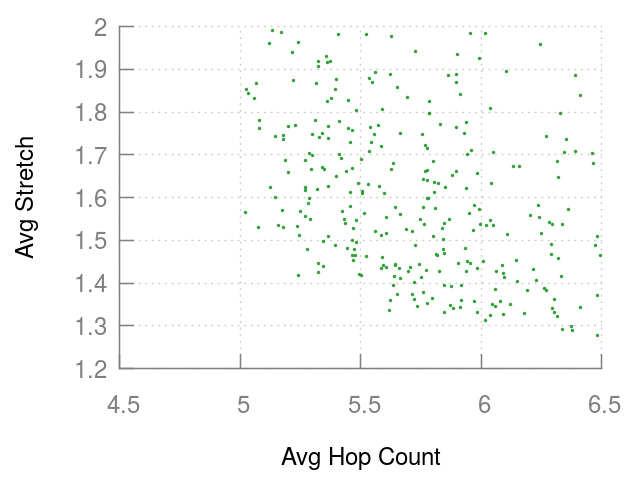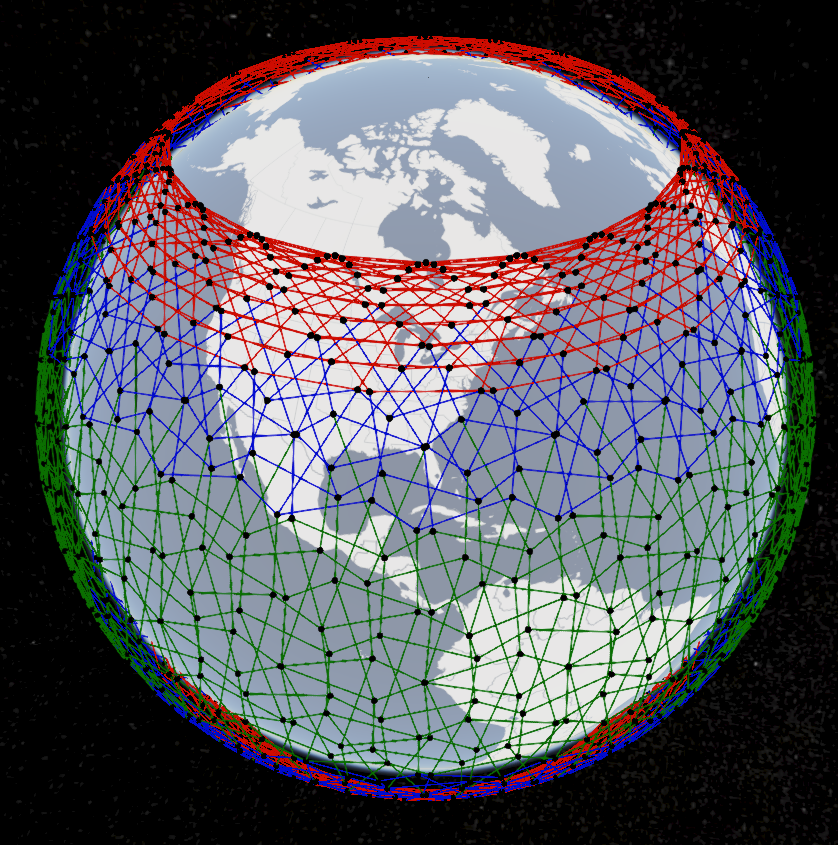Abstract: Upstart space companies are actively developing massive constellations of low-flying satellites to provide global Internet service. We examine the problem of designing the inter-satellite network for low latency and high capacity. We posit that the high density of these new constellations and the high-velocity nature of such systems render traditional approaches for network design ineffective, motivating new methods specialized for this problem setting.
We propose one such method, explicitly aimed at tackling the high temporal dynamism inherent to low-Earth orbit satellites. We exploit repetitive patterns in the network topology such that we avoid expensive link changes over time, while still providing near-minimal latencies at nearly 2x the throughput of standard past methods. Further, we observe that the geometry of satellite constellations admits more efficient designs, if a small, controlled amount of dynamism in links is permissible. For the leading Starlink constellation, our approach enables an efficiency improvement of 54%.
We propose one such method, explicitly aimed at tackling the high temporal dynamism inherent to low-Earth orbit satellites. We exploit repetitive patterns in the network topology such that we avoid expensive link changes over time, while still providing near-minimal latencies at nearly 2x the throughput of standard past methods. Further, we observe that the geometry of satellite constellations admits more efficient designs, if a small, controlled amount of dynamism in links is permissible. For the leading Starlink constellation, our approach enables an efficiency improvement of 54%.



